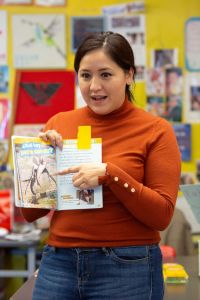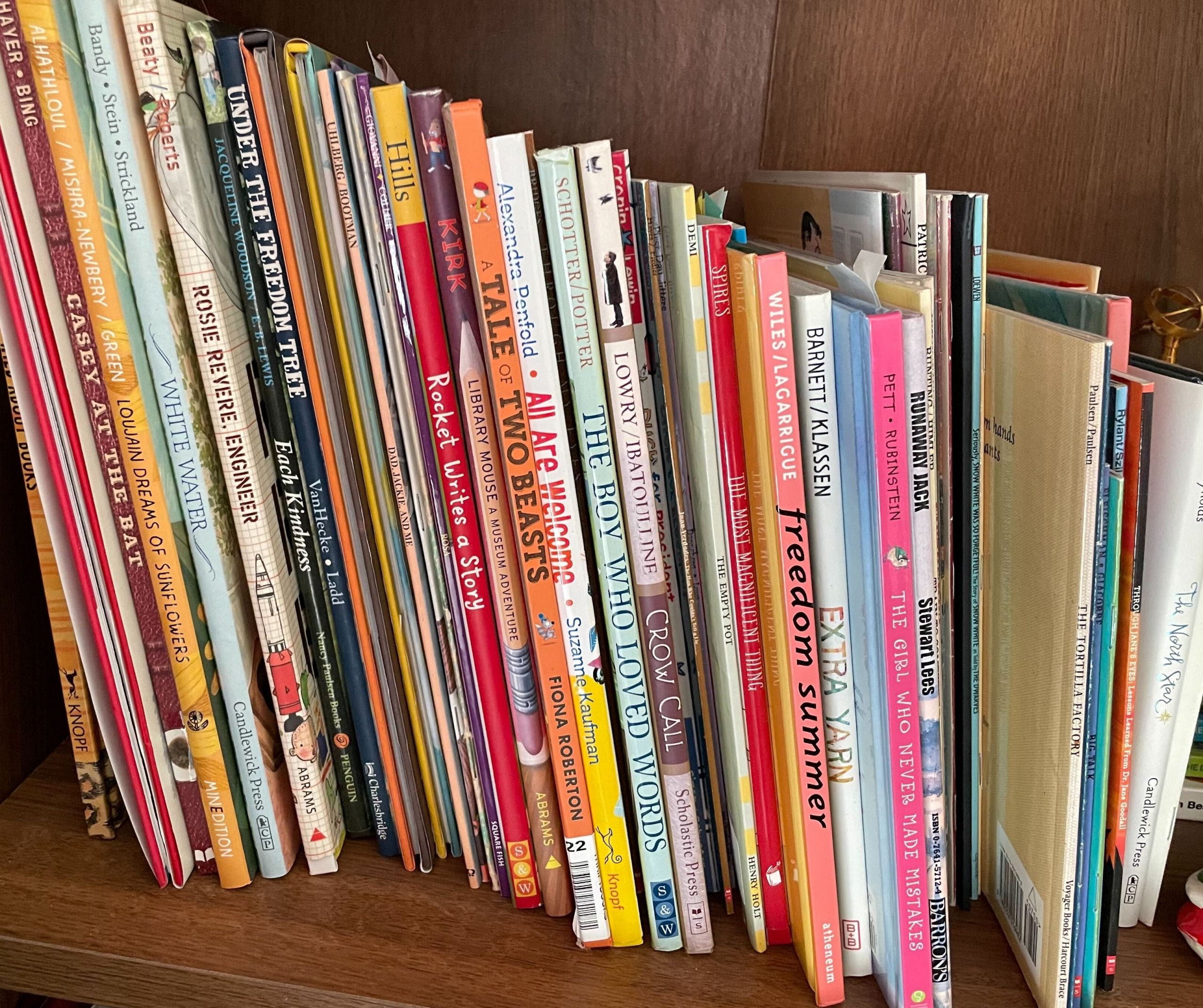When you hear the term “read aloud,” you picture a teacher or a librarian, seated in a rocking chair, a group of children seated on the ground gathered around. You picture an elementary classroom or library. But what about the secondary classroom? What about our middle and high school students? Do we ever truly out-grow being read to? I would like to claim emphatically that we do not, and a friend agrees with me and offers the evidence of the popularity of the audiobook industry. I believe the secondary setting is missing out on a powerful opportunity by abandoning a staple of the elementary classroom.
The Science of Reading is the latest movement when it comes to literacy, and I am glad to see it. I am glad to see it because it goes back to the basics of phonics. It goes back to helping students develop the foundation for learning how to “sound out” a word in order to learn a new word- whether that learning be in the spelling of a word which has been heard before or in the comprehending of an entirely new word.
“At the secondary level, fluency, vocabulary, and comprehension are key to learning, in any content area, and the Read Aloud can fit in at every grade level and every subject area.”
At the secondary level, we usually do not have the classroom time to go back to basics. We expect students to come to us with a solid foundation already in place. The popular term for this right now is vertical articulation. However, the Science of Reading is more than just phonics. It includes fluency and vocabulary and comprehension. This is where the Read Aloud is a perfect fit for the secondary setting to contribute to reading success. At the secondary level, fluency, vocabulary, and comprehension are key to learning, in any content area, and the Read Aloud can fit in at every grade level and every subject area.
What better way to help build fluency than to hear a fluent reader? What better way to improve vocabulary than to hear someone who is familiar with the new words read them aloud, and then explain them then and there in context? What better way to reach our auditory learners- very often our hesitant readers- than to read aloud to them, thus improving their comprehension?

The Picture Book Read Aloud allows students to see the text as it is read, yet another good way to build comprehension skills and build vocabulary. The picture book also provides a very non-threatening medium for supporting literacy. It is short. It has pictures. The pages are not covered in text. It feels doable.
The good news is that the publishing industry is turning out an absolute plethora of non-fiction picture books which are not only highly appropriate, but greatly compelling for the secondary level In a world where we are competing with video games, andTikTok, and SnapChat to grab our students’ attention, the picture book offers us an opportunity to make reading and learning fun!
This then all goes back to my personal fascination with curiosity. For me, curiosity is the ultimate intrinsic motivation to stimulate an interest in learning. I am introduced to a topic in a picture book- especially if a really good reader captures my attention- and I want to learn more. I am willing to spend the time and invest the effort to delve deeper, to learn more, to seek out additional knowledge.
The Read Aloud is the perfect way to tie into something students already know- story- and help introduce them to whatever new concept it is that you find in what you read to them. The Read Aloud is, in my opinion, the ultimate pre-reading activity. The Read Aloud is a fabulous way to grab students attention and help start a new unit in any content area.
Let me offer you some examples of what I am so excited about at the Secondary Level. Do you have an animal science class that is getting ready to start a unit on poultry? Then why not begin with Woo Hoo! You’re Doing Great. Basically the story is about finding something to cheer about, both for ourselves and for each other, but the character running around doing the cheering is a chicken. It was easy to relate how chickens do seem to be everywhere, making lots of noise, just like the main character. Great fun! Is your Advanced Placement/Dual Credit Senior English class getting ready to start a unit on the Harlem Renaissance? Why not start out with There Was a Party for Langston. Students meet a plethora of authors that contributed to and have grown out of that movement. Sarcasm is a challenging topic to teach. A fun way to approach it is You’re Going to Love This Book. It’s got homework and sprouts and the dentist and an early bedtime. It’s by Jory John. What’s not to love about ANYTHING by Jory. Want to get your nutrition classes involved? Then check out Pizza: A Slice of History. Computer Science classes have Jerry Changed the Game (a picture book about gaming?!?) and Grace Hopper: Queen of Computer Code. Don’t leave out Science. Earth Verse is written in haiku, but it is a well-researched, multi-layered look at rocks and minerals and all things Earth Science. Social studies is easy. There are so many picture book biographies of people who have made a difference as well as pivotal moments in History. A couple of my favorites are Hidden Hope, about the Holocaust, and Survivor Tree about September 11th. I’ve even found a book for an engineering or construction class, Concrete: From the Ground Up. I cannot wait to use The Great Stink in a World Geography class when they begin to explore the Industrial Revolution. I also think Girl on a Motorcycle would fit nicely in an advanced French Class, as it shows the true story of a young lady who traveled the globe on a motorcycle, and her journey begins in Paris. Finally, one of my newest personal favorites is Major Taylor: World Cycling Champion. It is the inspirational story of Marshall “Major” Taylor, and it has an Indiana connection! Then, of course, never forget the Bad Seed Collection/The Food Group by Jory John and The Rosie Revere Engineer Series/The Questioneers by Andrea Beaty. ALL of them are winners, anywhere, anytime.
“Whatever your subject area, whatever your level, there is at least one picture book out there for you.”
As I mentioned earlier in this article, the publishing industry has been adding a delightful explosion of nonfiction picture books the last several years. Whatever your subject area, whatever your level, there is at least one picture book out there for you. I challenge you to go out on a limb, try something a little different, and see what you can find. For more suggestions, check out the Read Aloud Indiana Book Award resources on the Indiana Library Federation website and my own personal list with book titles and suggested subject area connections, including all of the titles mentioned in the previous paragraph. I invite my fellow secondary level educators to jump aboard the Read Aloud bandwagon and help not only increase literacy but also generate some reading excitement. (Sadly, I realize as I am writing this blog and compiling my list of awesome picture books, music is missing. That shall be my next exploration.)
My experiences this past school year reinforce for me the power of the Read Aloud. Students in grades 6 through 12 responded positively and were happy to see me come waltzing in their classroom door a second time with a picture book tucked under my arm. It provided a lovely way to collaborate with my teachers across the building. It was a fun way to support literacy and the importance of reading. I invite you to join me!
Resources
Please login or register to claim PGPs.
Alternatively, you may use the PGP Request Form if you prefer to not register an account.



